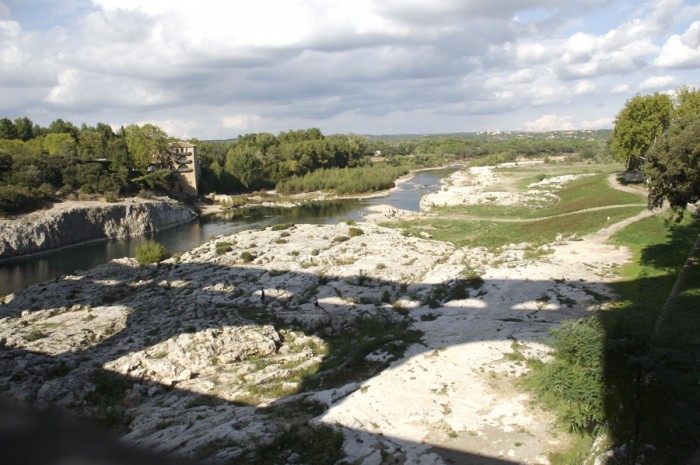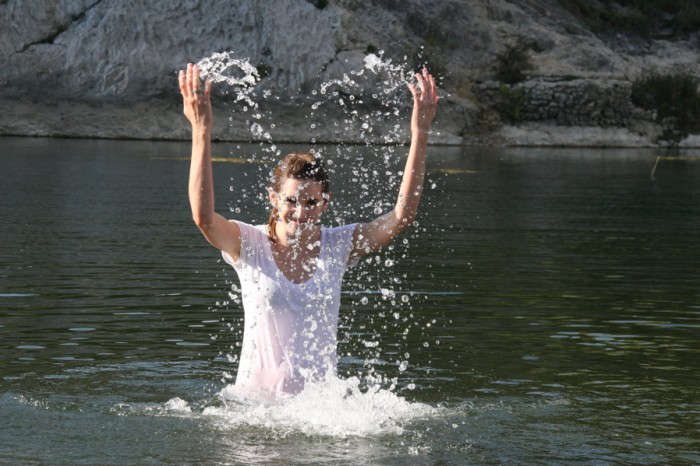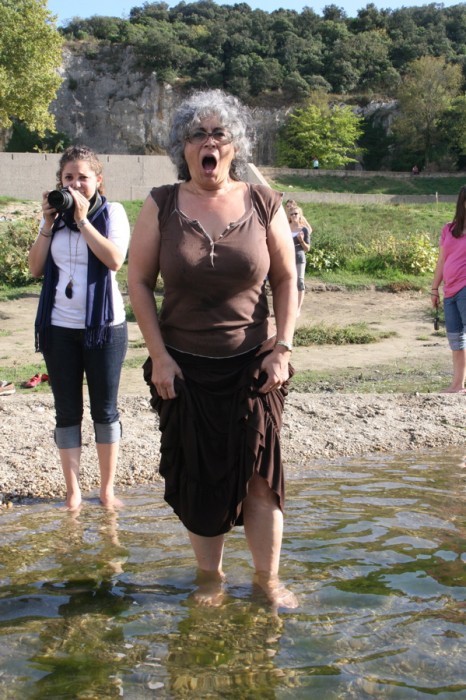October 17th, 2009 by Rachel | Country: France | 1 Comment »

Viewing major tourist attraction sites are not all about just taking a quick glance at it and snap a photo in order to brag to your family and friends that you’ve visited this particular site. Visiting the sites is about admiring what makes them so special and also having the ability to walk around see them in three-dimensional form. Some sites offer more than just a viewing opportunity. Pont du Gard where we visited after visiting the city center of Nimes, is an example where not only we can admire the greatest creation of the Romans, but also swim in the Gard River and bake under the sun. In spite of the water being chilly, it did not stop us from having a blast. We were all brave enough to step in the water and get soaked, even if we had clothes on!


As an art history student, it’s important for me to write down my observations and some facts that I’ve learned about the site. What’s incredible about this water aqueduct, built around during the 1st A.D., was that it was constructed without any use of mortar because stones were cut precisely. As one may notice, there are stones protruding out of the bridge. Those stones were just simply supports for the scaffolding. During the first few centuries, this bridge was used to bring the water from Fontaines d’Eure springs near Uzès to the Castellum in the Roman city of Nemausus which is now known as Nimes. Unfortunately, by around 9th century, it became totally useless and then, during the Middle Ages, it became a pedestrian bridge.
This bridge has very typical ancient Roman appearance as there are three rows of arcades. There is a sense of harmony because all three rows depict repeating arches with perfect half circular tops. It’s such a simple structure not only because of the repeating arches, but also because the color was uniform. It was just simply in the color of the sand.

























1 Comment
Ron Bartizek
October 17, 2009 at 8:09 pm
Very nice post. We were there two weeks ago and it was incredibly impressive. Hard to believe it is nearly 2,000 years old. Also interesting was the “graffiti” carved into the stones, some from the 18th century.